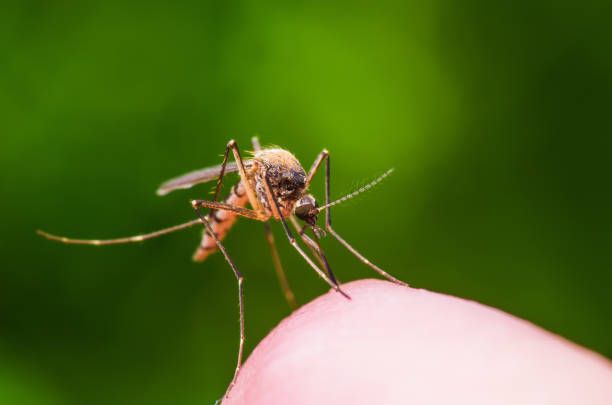In a recent study examining Jamestown Canyon virus (JCV), a mosquito-borne orthobunyavirus belonging to the California serogroup (CSG), researchers uncovered concerning trends regarding its impact. JCV has been identified as a prevalent pathogen in Canada and the US, with most cases resulting in either asymptomatic infection or mild febrile illness. However, the virus has demonstrated the potential to cause severe neurological diseases, including meningitis and encephalitis.
“We describe 5 cases of JCV-associated neurologic disease in patients from British Columbia, Alberta, Quebec, and Nova Scotia in Canada during 2011–2016 and indicate the regions of all potential exposures for each of those cases,” according to the investigators. “When CSG virus testing resumed in Canada in 2005, most CSG virus infections were shown to be caused by JCV, indicating the emergence of JCV as the primary CSG virus causing infection in Canada.” 1
According to the CDC, for people with symptoms, the time from mosquito bite to feeling sick (incubation period) ranges from a few days to 2 weeks.2
- Initial symptoms can include fever, fatigue, and headache.
- Some people also have respiratory symptoms such as cough, sore throat, or runny nose.
- JCV can cause severe disease, including infection of the brain (encephalitis) or the membranes around the brain and spinal cord (meningitis).
- Symptoms of severe disease can include a stiff neck, confusion, loss of coordination, difficulty speaking, or seizures.
- About half of patients reported with JCV disease are hospitalized.
- Deaths associated with JCV infection are rare.
3 Key Takeaways
- The study emphasizes the emergence of JCV as a primary concern among mosquito-borne orthobunyaviruses in Canada and the US.
- The study delineates the clinical presentation of JCV-associated neurologic disease, highlighting initial symptoms such as fever, fatigue, and headache, which may progress to severe manifestations including confusion, loss of coordination, and seizures.
- The investigation identifies cases of JCV-associated neurologic disease across multiple regions in Canada, with two notable cases originating from Quebec and Nova Scotia, potentially linked to travel in the northeastern US.
In this study, the 2 cases raised the most concern, originating from Quebec and Nova Scotia, where patients may have contracted JCV during travel to the northeastern US.
Quebec Case
On August 20, 2011, a 53-year-old man from Montreal, Quebec, presented with fever, fatigue, left-sided neck swelling and pain, and a rash on his lower back, buttocks, and genitalia. He reported a recent camping trip in Maine and New Hampshire, US.
According to the CDC, “Within 24 hours of admission, he became confused, and worsening hypotension and dyspnea developed, requiring intubation and vasopressors.”1
Serum and cerebrospinal fluid samples tested positive for JCV antibodies. The patient experienced confusion and hypoactive delirium during hospitalization. Despite being discharged on September 21, he continued to suffer from short-term memory loss, expressive aphasia, and muscle pain. 6 months later, his expressive aphasia persisted, but other symptoms had improved.
Nova Scotia Case
In June 2016, a 70-year-old man with psoriasis visited an emergency department in Nova Scotia after a fall. He experienced a frontal headache, episodic dizziness, and nausea with vomiting for 3 to 4 days. About 2.5 weeks before his admission, he had traveled in the US for 10 days. Various tests for infectious agents were negative except for JCV, which was confirmed in serum and cerebrospinal fluid samples.
According to the CDC, “The patient defervesced by day 2 but reported diffuse myalgias, although his headache was improving. His hospitalization was further complicated by a pulmonary embolism from which he recovered. After 5 weeks of rehabilitation and resolution of his symptoms, the patient was discharged.”1
This study’s limitation was not testing for La Crosse virus (LACV), a CSG virus with diagnostic similarities to other CSG members. LACV testing was not included initially due to previous negative serologic screening studies, despite the presence of its primary vector in southern Canada. Including LACV testing in diagnostic algorithms for suspected CSG virus exposures in Canada is warranted considering potential virus expansion and increased prevalence.
This study highlights JCV as an emerging threat in North America because of its potential to cause neurological diseases. The findings underscore the need for enhanced surveillance, including testing for related viruses like LACV, and collaborative efforts among healthcare professionals and public health authorities to mitigate the impact of JCV on human health. Public health interventions focusing on mosquito control and early detection are essential to prevent severe outcomes and minimize the burden.
References
1. Meier-Stephenson V, Drebot MA, Dimitrova K, et al. Case Series of Jamestown Canyon Virus Infections with Neurologic Outcomes, Canada, 2011–2016. Emerg Infect Dis. 2024;30(5):874-881. doi:10.3201/eid3005.221258.APA
2. CDC. Jamestown Canyon Virus: Symptoms, Diagnosis, & Treatment. Last reviewed October 13, 2022. Accessed May 2, 2024. https://www.cdc.gov/jamestown-canyon/symptoms/index.html

